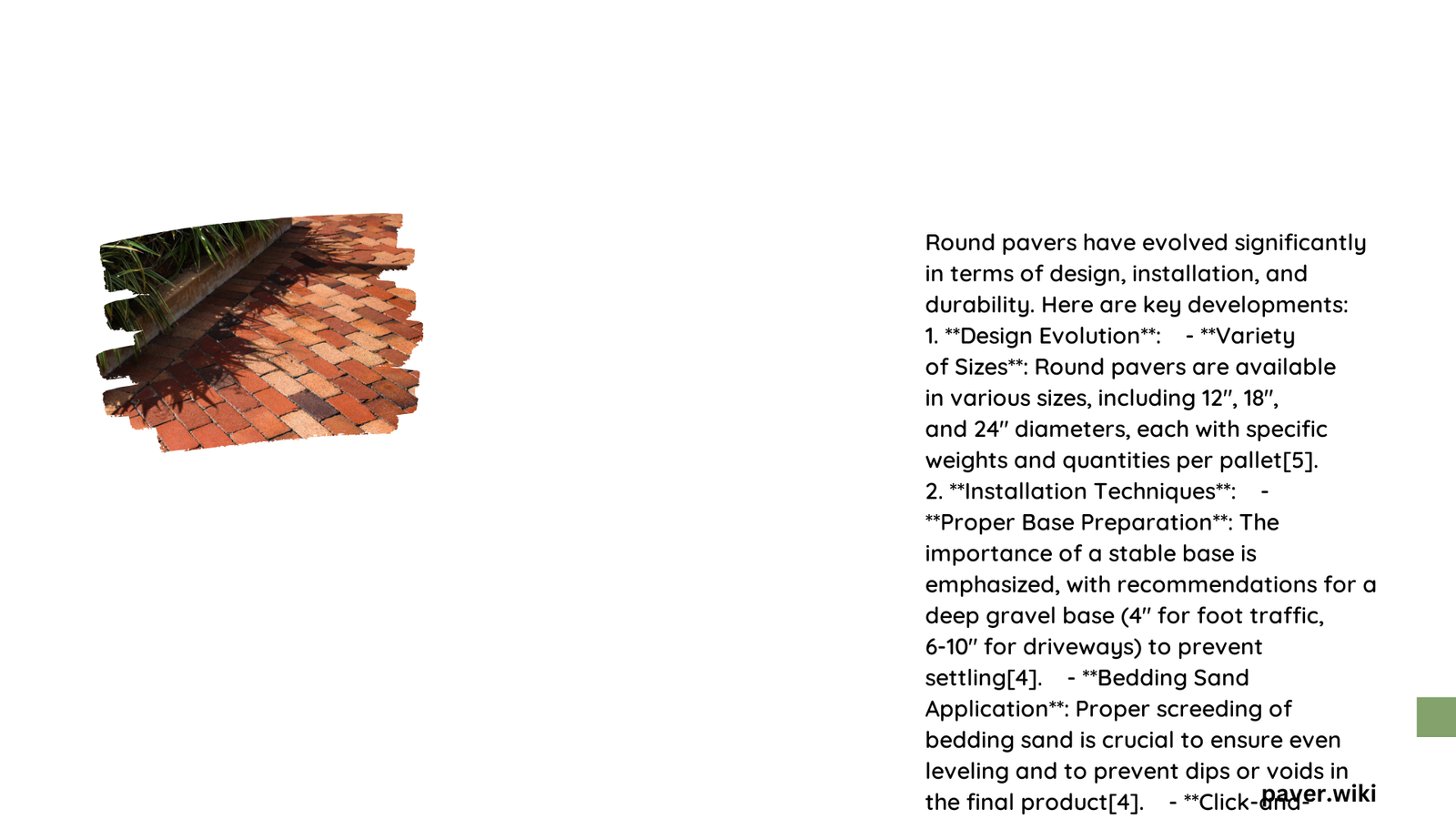Round pavers, once an intriguing concept in landscape design, gradually disappeared from mainstream construction due to significant technical limitations. Their inability to interlock efficiently, complex installation processes, and reduced structural stability led to their gradual obsolescence, with rectangular and hexagonal pavers emerging as superior alternatives in modern architectural and landscaping practices.
What Caused the Disappearance of Round Pavers?
Why Did Round Pavers Fail to Maintain Market Relevance?
Round pavers encountered multiple challenges that ultimately contributed to their decline:
- Structural Instability
- Circular shapes lack natural interlocking mechanisms
- Increased risk of movement and displacement
-
Higher maintenance requirements
-
Installation Complexity
- Difficult to create uniform surfaces
- Increased labor costs
- Requires specialized techniques
What Technical Limitations Impacted Round Paver Performance?
| Performance Aspect | Round Paver Challenge | Rectangular Paver Advantage |
|---|---|---|
| Load Distribution | Uneven weight transfer | Consistent load bearing |
| Surface Alignment | Irregular positioning | Precise geometric placement |
| Material Efficiency | Higher waste percentage | Optimal material utilization |
How Did Market Dynamics Influence Paver Evolution?
The transformation of paving technologies dramatically shifted design preferences:
- Post-World War II Engineering
- Concrete paver innovations
- Focus on standardized, efficient shapes
- Emphasis on durability and cost-effectiveness
What Alternatives Replaced Round Pavers?
Modern landscape design embraced more practical alternatives:
- Rectangular concrete pavers
- Interlocking hexagonal designs
- Permeable paving systems
- Porcelain and natural stone options
Can Round Pavers Still Be Used Today?
While uncommon, specialized applications might still incorporate round pavers:
- Decorative garden pathways
- Artistic landscape installations
- Niche architectural projects
What Lessons Emerged from Round Paver Development?
The round paver narrative demonstrates critical design principles:
- Functionality trumps aesthetic novelty
- Structural integrity is paramount
- Standardization drives technological advancement
Conclusion: A Design Evolution

The story of round pavers represents more than a material transition—it symbolizes architectural problem-solving, where practical considerations ultimately reshape design paradigms.
Key Takeaways
- Round pavers became obsolete due to technical limitations
- Rectangular designs offer superior performance
- Market demands drive material innovation
Future Perspectives
Emerging technologies continue to push boundaries in paving materials, suggesting that today’s standard might become tomorrow’s obsolete design.
Reference:
– Parsons Rocks – Paver History
– Gray Horse Paving – Paver Origins
– Seal ‘n Lock – Paving Technologies
